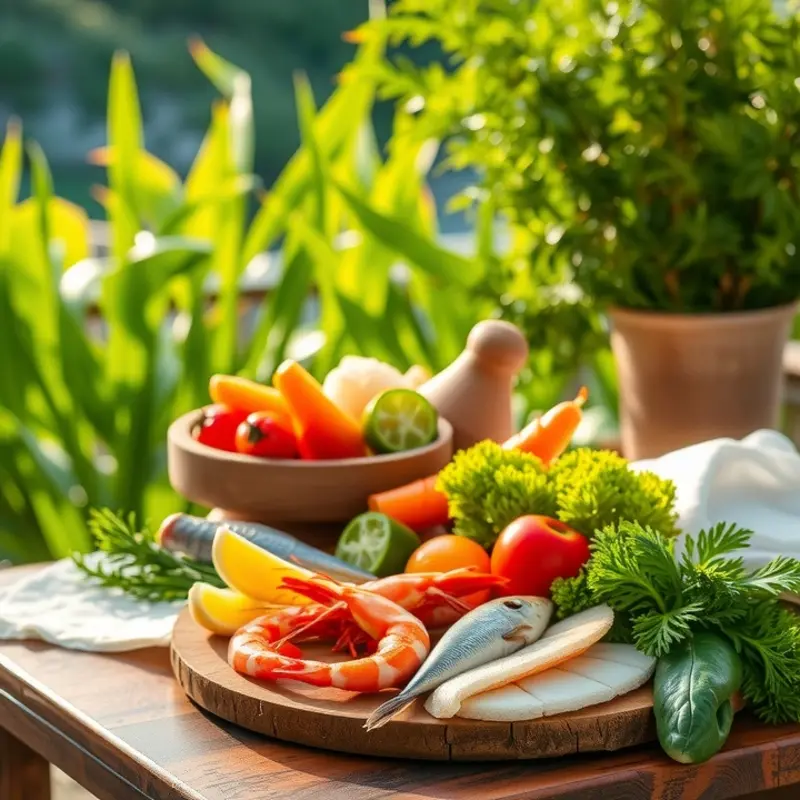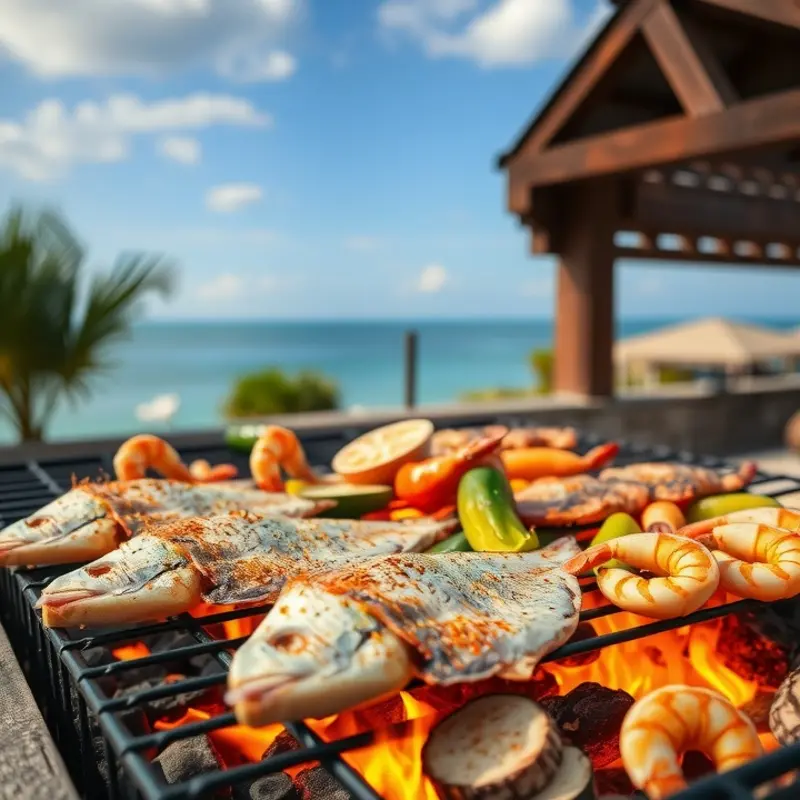Elevate your grilling game by mastering the art of cooking seafood. With the right techniques and flavors, seafood can be a highlight of any summer BBQ. This guide provides practical tips tailored for all home cooks, so whether you’re grilling delicate shrimp or thick fillets, you can achieve impressive results every time.
Preparing Seafood for the Grill

Grilling seafood is an art that requires careful preparation. Selecting the right seafood is the first step. Freshness is paramount. Look for bright eyes, shiny skin, and a clean ocean scent in fish. Shellfish should be tightly closed and feel heavy for their size. Understanding these signs ensures you start with quality ingredients.
Cleaning seafood properly is essential for achieving the best results on the grill. For fish, scales and entrails should be removed. If you’re unsure about the process, ask your fishmonger to do it for you. With shellfish, scrub the shells under running water and remove any beards or barnacles. This preparation helps prevent unpleasant flavors and ensures even cooking.
Once cleaned, consider marinating your seafood. Marinades not only enhance taste but also help keep seafood moist on the grill. Use citrus juices, herbs, and oils to create a marinade that complements the natural flavors of the seafood. However, limit marinating time; seafood, especially fish, can become mushy if marinated too long. Thirty minutes to an hour is often sufficient.
Handling seafood carefully is crucial. Use a grill basket for smaller or more delicate pieces to prevent them from falling apart or sticking to the grill. This tool is particularly useful for shrimp or thin fillets. If you’re working with whole fish, oil both the grill and the fish skin to aid in release.
When it comes to grilling, not all seafood is created equal. Each type requires specific considerations. For instance, tuna and swordfish are best seared over high heat for a short period, while more delicate fish like sole or flounder need gentler heat. Understanding these differences can greatly influence the outcome and enjoyment of your meal.
Lastly, don’t forget safety. Keep seafood chilled until it’s ready to cook, and maintain a clean workspace to avoid cross-contamination. For additional tips on efficient seafood preparation that can save you time, check out speedy seafood prep.
By mastering these preparation techniques, you’ll be well on your way to grilling seafood that’s both delicious and perfectly cooked.
Grilling Techniques for Perfect Seafood

When it comes to grilling seafood, technique is everything. Achieving that perfect char on the outside while maintaining moist, flaky insides is a balance mastered through understanding various grilling methods and timing.
Direct vs. Indirect Heat
The key is knowing when to use direct versus indirect heat. For quick-cooking seafood like shrimp or small fish fillets, direct heat works perfectly. It sears the outside quickly, locking in juices. For larger, thicker cuts, such as whole fish or thicker tuna steaks, indirect heat is your friend. This slower, more gradual cooking method prevents overcooking and ensures even heat distribution.
Tools of the Trade
A fish basket can save you from a lot of hassle when grilling fillets or delicate fish. It ensures your fish stays intact while you’re flipping it. For shellfish, skewers can be your best bet. Alternating pieces of shrimp with vegetables on a skewer not only provides a firm grip but also adds flavor and nutrition.
Grill’s Sweet Spot
Preheating the grill is crucial. Aim for medium-high heat; you should hear a satisfying sizzle when you place seafood on the grates. A pro tip is to hold your hand about five inches above the grill. If you can hold it there for 4–5 seconds, you’ve hit the right temperature for seafood.
Is it Done Yet?
Determining when seafood is done can be tricky. Overcooked seafood is rubbery, while undercooked seafood can be unsafe. For fish, look for opaque flesh and an easily flaked texture. Shrimp should transition to a nice pink with opaque white flesh. Shellfish like clams and mussels are done when they open, a natural signal they’re ready to enjoy. For more guidance on preparation, you might find these speedy seafood prep tips helpful.
Adding Flavor
Marinating is an excellent pre-grilling step to infuse flavors. Try a mix of olive oil, lemon juice, garlic, and herbs for a classic medley. For bolder flavors, venture into spice rubs or soy-based marinades. Brushing on a sauce like lemon butter or pesto during the last minute can offer an extra burst of flavor.
Garnishing for Impact
Once off the grill, let your seafood rest—the flavors settle, enhancing taste. A squeeze of citrus can brighten up any seafood dish, while fresh herbs like dill or cilantro offer a refreshing finish. Consider topping with a simple homemade salsa or relish to add texture and a burst of flavor.
Mastering the Art
Grilling seafood is an art perfected by practice and understanding the nuances of heat and time. With these techniques, you’re on your way to delicious, restaurant-quality seafood that impresses even the most discerning palates.
Final words
Grilling seafood successfully involves careful preparation and knowledge of proper techniques. By choosing fresh ingredients, marinating effectively, and mastering grilling temperatures, you can create standout seafood dishes every time. With practice and attention to detail, you’ll not only impress your guests but also empower yourself as a confident cook in the kitchen. So fire up the grill, gather your favorite seafood, and enjoy the delightful rewards of your efforts. The perfect seafood grill awaits you!







